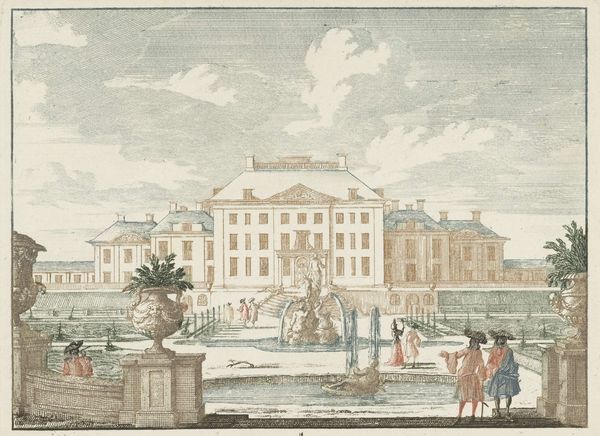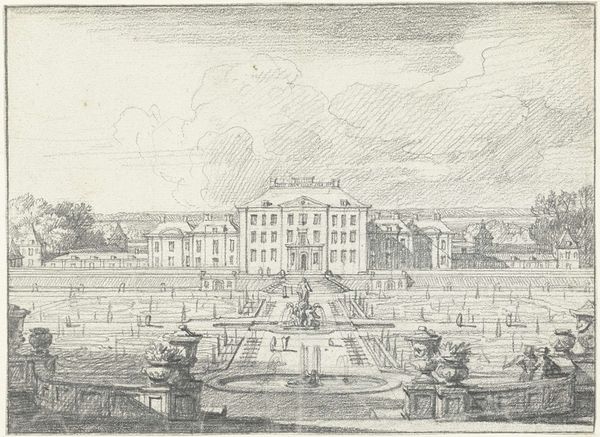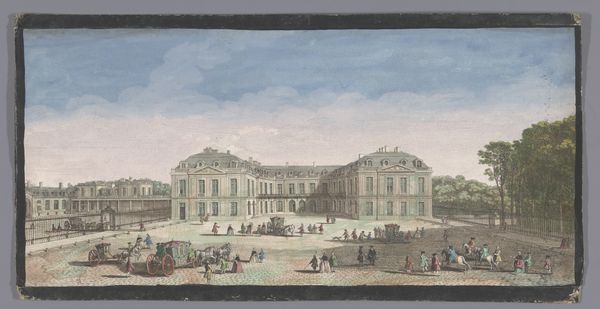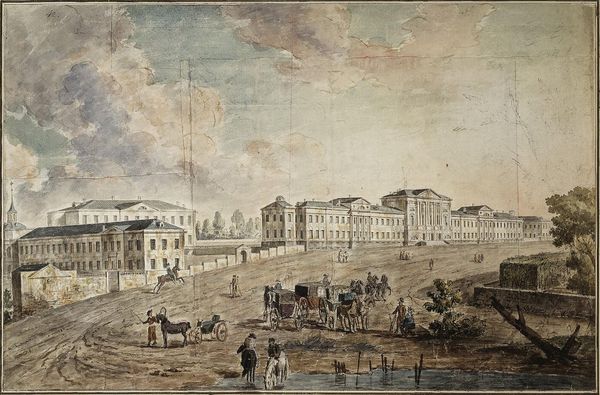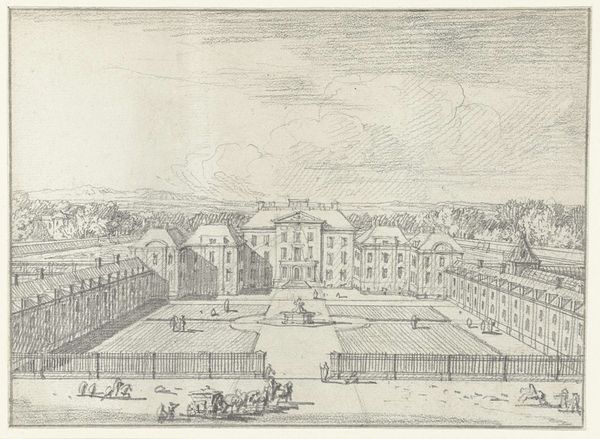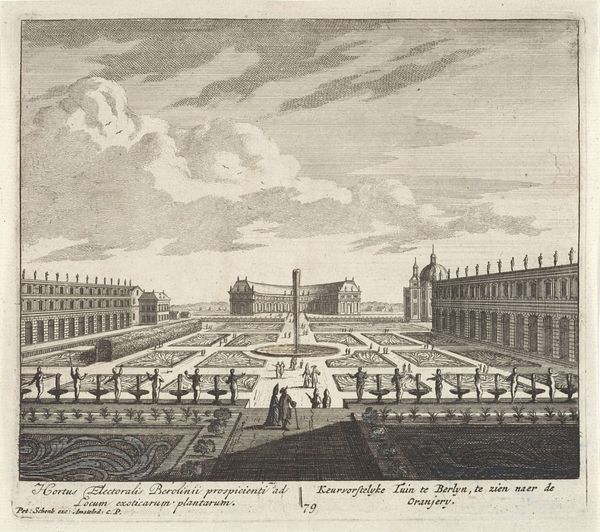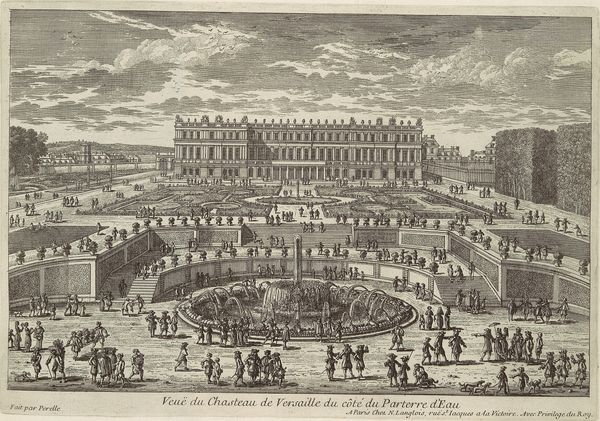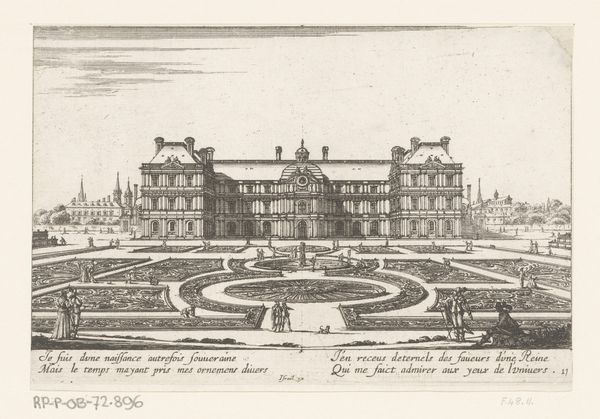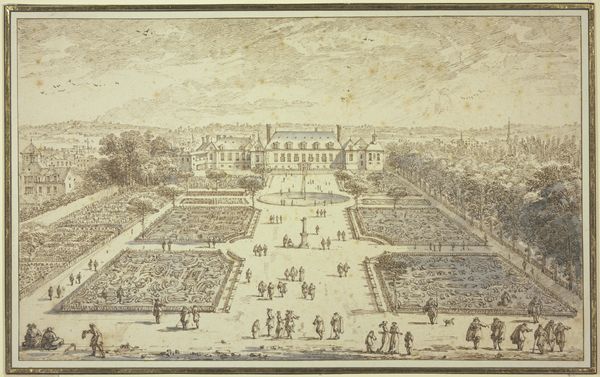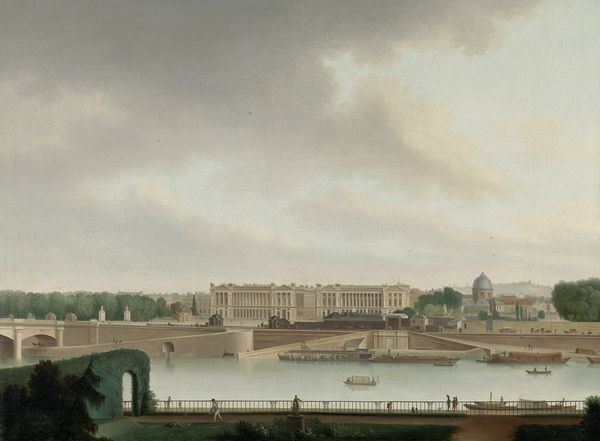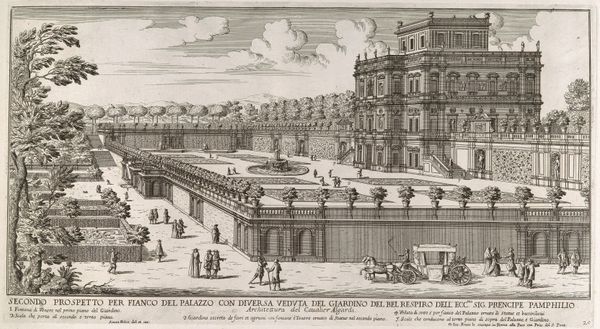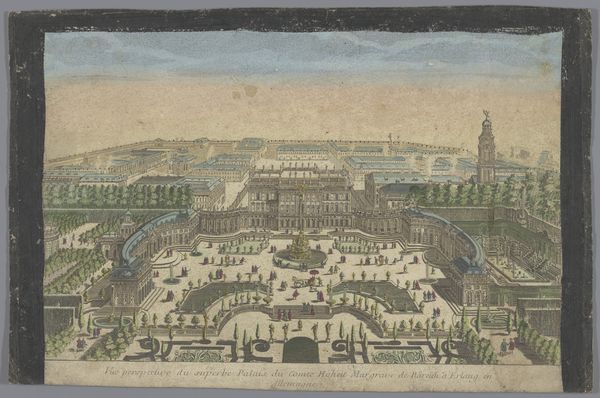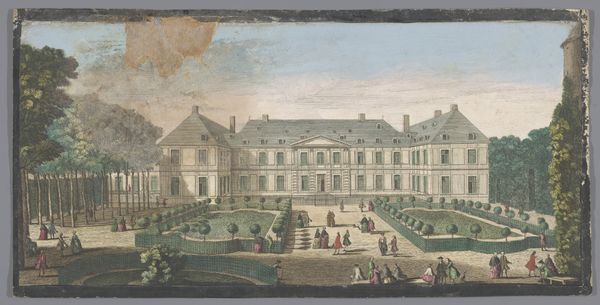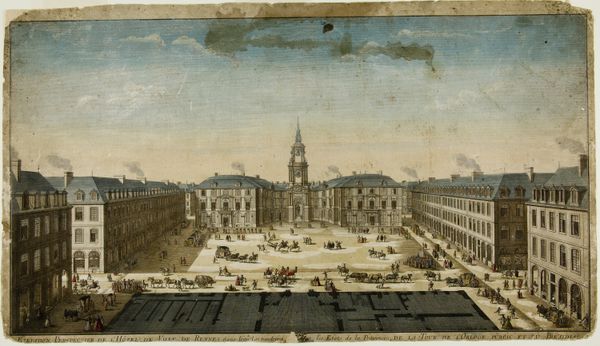
Dimensions: 68 x 120 cm
Copyright: Public domain
Editor: So, we are looking at "Schloss Nymphenburg" by Bernardo Bellotto, created in 1761 using oil paint. The detailed rendering is stunning, it really shows off the opulence of the time, almost feels staged. What's your perspective on it? Curator: What I notice immediately is the incredible labor involved in its creation – from the mining and processing of the pigments for the oil paint, to the craftsmanship in preparing the canvas, it really brings the social aspect to life. Editor: I didn't consider that aspect. Curator: Think about the broader context. Bellotto was not just representing a place, but the *idea* of power made visible through landscape architecture. The sheer scale speaks of controlling nature and the means available to achieve this controlled perfection. All that required labor! What does the precision tell you about the social stratification? Editor: Well, all those perfectly aligned trees and carefully designed gardens would need a massive workforce. It wasn’t just about painting pretty scenery, but demonstrating what vast resources the ruling class had at their disposal and the lives they could affect in building and painting it. Curator: Exactly. It challenges the concept of fine art, making the work that creates "fine art" visible. Also, where would the painting hang, and for whom was it intended? These were status objects, luxury goods reflecting consumer power. Editor: I guess I was focusing on the pretty colours and grand palace initially, but your point about labour really changes my perspective on how to interpret this oil painting. Curator: By looking at materials and production, we can explore art as a social and economic product. We bring focus to both artist and labourer in an economic and social system.
Comments
No comments
Be the first to comment and join the conversation on the ultimate creative platform.
